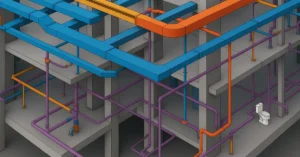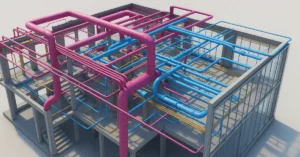Clay Mega-blocks: A Sustainable Revolution in Building Materials

In the quest for sustainable, eco-friendly, and innovative construction materials, clay has emerged as a promising contender. Its unique properties, abundant availability, and adaptability have positioned clay mega-blocks as a potential game-changer in the construction industry. As we face mounting environmental challenges, exploring unconventional building materials like clay mega-blocks could pave the way for a greener, more sustainable future in architecture and construction.
The Rise of Clay Mega-blocks
In recent years, architects and engineers have been experimenting with clay as a building material, going beyond its traditional use in bricks and pottery. Clay mega-blocks are essentially large, prefabricated building blocks made primarily from clay and other natural additives. These blocks are environmentally friendly, cost-effective, and energy-efficient. Here’s why they are gaining prominence in the construction industry:
- Sustainability:
Clay is abundant and readily available in many parts of the world. It is a renewable resource that can be harvested without causing significant environmental harm. Clay mega-blocks are biodegradable, making them an attractive choice for sustainable construction. - Energy Efficiency:
Manufacturing clay mega-blocks consumes significantly less energy compared to traditional building materials like concrete or steel. The lower energy footprint during production contributes to reduced greenhouse gas emissions, aligning with global efforts to combat climate change. - Thermal Insulation:
Clay has excellent thermal properties, which can help regulate indoor temperatures naturally. Buildings constructed with clay mega-blocks tend to be more energy-efficient, requiring less heating or cooling, which is advantageous for reducing energy consumption. - Sound Insulation:
Clay’s dense structure also provides excellent sound insulation, creating a quieter and more comfortable living or working environment. This makes it ideal for densely populated urban areas or areas with high noise pollution. - Versatility:
Clay mega-blocks can be molded into various shapes and sizes, offering architects and designers creative freedom. Their adaptability allows for the construction of diverse structures, from traditional homes to contemporary, innovative architectural designs. - Health Benefits:
Clay is a non-toxic material that does not emit harmful volatile organic compounds (VOCs). This means that buildings made from clay mega-blocks offer healthier indoor air quality and reduce health risks associated with chemical emissions.
Applications in the Future
Clay mega-blocks are not just a sustainable choice; they are versatile and suitable for various types of construction. Here are some potential applications in the architecture and construction of the future:
- Residential Buildings:
From single-family homes to multi-story apartment complexes, clay mega-blocks can provide a comfortable, eco-friendly, and aesthetically pleasing option for housing. - Commercial Spaces:
Clay mega-blocks can be used to create efficient and sustainable office spaces, retail establishments, and industrial facilities. - Green Roofs:
With their natural thermal insulation properties, clay mega-blocks can be incorporated into green roof designs, further enhancing energy efficiency and creating lush urban oases. - Educational Institutions:
Schools and universities can benefit from the sustainable and healthy building environment provided by clay mega-blocks. - Cultural and Recreational Spaces:
Museums, theaters, and sports facilities can use clay mega-blocks to create architecturally stunning and eco-friendly structures.
Challenges and Future Developments
While clay mega-blocks offer promising advantages, some challenges must be addressed for their widespread adoption. These include:
- Structural Stability:
Ensuring the long-term structural stability of clay mega-block buildings requires thorough research and engineering solutions. - Regulatory Approvals:
Developing industry standards and obtaining regulatory approvals for clay mega-block construction will be essential. - Education and Training:
Construction professionals will need training and education to work with clay mega-blocks effectively. - Market Adoption:
Encouraging the construction industry to embrace this innovative material will require awareness and market incentives.
In the future, we can anticipate further developments in clay mega-block technology. Researchers will likely explore ways to enhance their structural integrity, increase fire resistance, and improve their resistance to erosion. As more architects and builders recognize the benefits of clay mega-blocks, we may see innovative architectural designs that exploit the material’s unique properties, resulting in sustainable, aesthetically pleasing structures.
Conclusion
Clay mega-blocks represent a compelling solution to the environmental challenges facing the construction industry. Their sustainability, energy efficiency, versatility, and health benefits make them an exciting prospect for the future of architecture and construction. While there are challenges to overcome, the adoption of clay mega-blocks could significantly contribute to the development of eco-friendly, innovative, and inhabitable structures in the years to come. As our world moves toward a more sustainable future, clay mega-blocks are poised to play a pivotal role in the evolution of building materials and construction practices.
If you’re interested in learning more about architecture firms in Europe, check out this comprehensive list of the top 50 firms compiled by Archgyan. From innovative startups to long-established industry leaders, this list has it all. Take a look and discover some of the most inspiring and influential architecture firms in Europe today.
If you’re interested in architecture and want to learn more about this amazing field, subscribe to our podcast on youtube
For more SketchUp tutorials, head to https://www.sketchupguru.com










